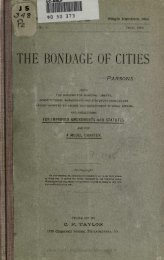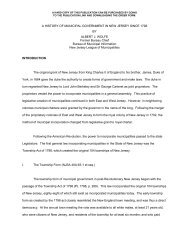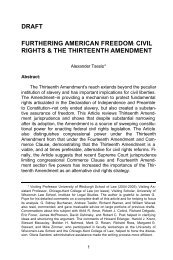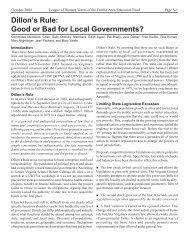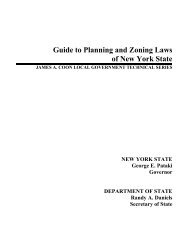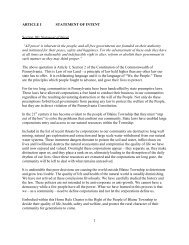The British Empire and Famine in Late 19th Century Central India
The British Empire and Famine in Late 19th Century Central India
The British Empire and Famine in Late 19th Century Central India
You also want an ePaper? Increase the reach of your titles
YUMPU automatically turns print PDFs into web optimized ePapers that Google loves.
sal<strong>in</strong>ation, silt<strong>in</strong>g, leach<strong>in</strong>g, disease, <strong>and</strong> fam<strong>in</strong>e that were triggered by a general<br />
environmental collapse. 35<br />
P.A. Elph<strong>in</strong>stone conducted extensive survey <strong>and</strong> settlement operations <strong>in</strong> the<br />
Deccan <strong>in</strong> 1860s <strong>and</strong> 70s. In his reports he poignantly noted the neglect of traditional<br />
water works <strong>and</strong> the acute problem of water scarcity. 36<br />
But every subsequent colonial<br />
official <strong>in</strong> this cotton rich region of <strong>Central</strong> <strong>India</strong> came to believe that there was no need<br />
to develop irrigation or water works because the black cotton soil was naturally rich <strong>and</strong><br />
did not need much water to grow crops. A strong anti-irrigation lobby among the<br />
officials created this myth that Berar was immune from drought <strong>and</strong> fam<strong>in</strong>e. <strong>The</strong>refore<br />
the need for a fam<strong>in</strong>e code or relief measures were neither felt nor devised. With this<br />
attitude, the officials <strong>in</strong> fact refused to even acknowledge that drought, disease, <strong>and</strong><br />
fam<strong>in</strong>e related deaths were tak<strong>in</strong>g place. 37<br />
This denial <strong>and</strong> failure to put <strong>in</strong> place even a<br />
semblance of <strong>in</strong>frastructure made the fam<strong>in</strong>e <strong>in</strong> <strong>Central</strong> <strong>India</strong> all the more devastat<strong>in</strong>g.<br />
Similarly, the sanitary commissioner‟s reports actually drew a strong connection between<br />
contam<strong>in</strong>ated water <strong>and</strong> diseases like cholera, malaria, diarrhea, dysentery <strong>and</strong> smallpox,<br />
not to mention undernourishment caused by the low calorie <strong>in</strong>take of the general mass of<br />
population. 38<br />
Yet, no public action was forthcom<strong>in</strong>g. And when serious fam<strong>in</strong>es did hit<br />
the region (1877-78; 1896-97 <strong>and</strong> 1899-1900) <strong>and</strong> the state was forced to recognize it on<br />
account of millions of deaths, the blame was put on natural causes like the failure of ra<strong>in</strong>s<br />
<strong>and</strong> crops. 39<br />
However, a simple common sense query would demolish this colonialist<br />
argument. If the region is naturally rich with black cotton soil <strong>and</strong> does not need much<br />
water to grow crops, then how can failure of ra<strong>in</strong> cause fam<strong>in</strong>es?<br />
13






